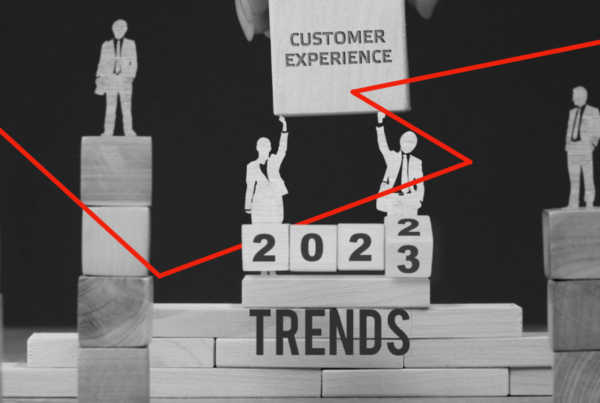Behavioral metrics alone aren’t enough to measure customer loyalty. Emotional loyalty must also be considered for long-term brand success.
What does “loyalty” mean? Could it be the way your pet follows, protects, and looks at you, no matter what? How about customer loyalty? Could it be the way your shoppers buy from you, how they keep returning for more, and why they revisit?
In a recent post, we covered six different ways to protect and build customer loyalty effectively. In this article, we help to understand the main types of it and highlight the importance of emotional loyalty as the strongest driver of customer loyalty.
Main Types of Customer Loyalty
Oftentimes, when we think of “customer loyalty,” many of us think of transactional loyalty. Indeed, this type of loyalty has been proven to be effective in building overall brand loyalty. However, the balance between providing transactional and emotional customer loyalty is uneven, focusing less on the latter. The nature of “loyalty” is more of an emotion rather than a transaction. Executives even say they understand consumer’s feelings, but only 15% of customers actually agree with this.
Let’s first get a brief refresher on the three main types of customer loyalty. They include:
- Behavioral Loyalty: More about repeat purchases; the customer purchases the same products based more on habits and convenience than preference, price, or emotions. Brands can easily measure this kind of loyalty by accessing purchase records, but it’s not necessarily an effective indicator of loyalty. Buying something, again and again, could simply be because the customer couldn’t find the alternative they really want, or they were pressured to switch to a different provider.
- Rational (Functional or Cognitive) Loyalty: A type of customer loyalty that relies on transactions. The customer is calculative and is more drawn to numbers or quantitative values, such as reward points. They constantly weigh the options between the product’s value or service versus their relationship with the brand.
- Emotional Loyalty: There’s more of a psychological preference and affective attachment to the actual brand itself rather than its associated products or services. Instead of buying something based on incentives, convenience, or transactions, the customer purchases more because they have a strong positive feeling about a certain brand. Reasons can be due to superior customer service, trust, social mission, storytelling, etc.

Source: Capgemini Digital Transformation Institute
Winning the Customer’s Mind and Heart: Why Emotional Loyalty Is Important
It’s widely believed that emotional loyalty is the biggest driver of the customer experience. According to research, emotionally loyal customers will visit their favorite brand 32% more often and spend 46% more money than those with less emotional ties.
Therefore, businesses should prioritize the emotional aspects of loyalty even more. There’s something much deeper and more meaningful when customers have a high emotional tie to a brand. In other words, a deep sense of commitment that goes beyond economic benefits.
What’s more, just imagine your strategy focusing mainly on transactional loyalty. There would be a lack of an authentic connection with your target audience. The so-called rational buyer would likely only come around as long as your business gives them what they want. However, if there’s a strong positive emotion tied between them and your brand, they probably wouldn’t care if your product is out of the way. They’d buy from you regardless of inconvenience – and they’ll keep coming back for more.
How Brands Can Build Emotional Loyalty
Use both behavioral and emotional metrics
Historically, marketers have been looking at traditional behavioral metrics to gauge customer loyalty. Yet, recently, businesses are trying to perform emotion analytics and uncover the underlying psychological drivers of customer behavior to understand them deeper.
Both behavioral and emotional metrics should be used to measure true loyalty. While it is widely understood that loyalty encompasses transactional habits and customer sentiment regarding a brand, marketers have primarily relied on measuring retention, repeated purchases, and incremental sales to test the effectiveness of loyalty programs. However, those metrics are not enough to help us truly understand the “why” behind consumer behavior, such as why they stopped buying or why they continue to buy with a particular business.
In short, emotional loyalty alone does not complete the puzzle. Both behavioral and emotional metrics must be combined to truly understand why people are faithful to specific names and maintain their commitment.

Source: Capgemini Digital Transformation Institute
Rely more than on a single score
Measuring emotional loyalty goes beyond calculating a single score, such as your Net Promoter Score (NPS) or the Customer Satisfaction Score (CSAT). It’s simply not enough to survey to capture either score because each customer has different brand interactions. Their satisfaction (or dissatisfaction) with a particular touchpoint temporarily depends on their loyalty.
Therefore, considering how social media has been well-engrained in our everyday lives, businesses should consider sentiment analysis on their social channels—on top of that, frequently surveying customers in general and offering open-ended feedback in their call centers.
In turn, your team would make data collection and analysis more valuable to allow continuous improvements.
Combine brand values with customer values
Besides the numbers or constant measuring to analysis, your team must simply help customers feel respected, satisfied, and valued to build emotional loyalty. According to Forrester’s CX Index data, when customers feel valued by brands, 76% of them said that they’d continue to purchase with the brand.
Moreover, 80% of shoppers will spend more with the business, and a good 87% will most likely recommend the company to peers. All of this highlights the importance of companies needing to intertwined their brand values with the customers’.
Wonderflow Helps Build and Protect Emotional Loyalty
Text analytics tools, such as those in the Voice of the Customer (VoC) analytics market, are increasingly advancing and becoming widely used to measure emotional loyalty. Wonderflow is one of the few emerging VoC technologies that enable brands to capture the customer sentiment among the millions of written customer reviews.
It does so by collecting feedback from hundreds of online sources and then analyzing them all in one place. The artificial intelligence of the software has natural language processing capabilities. That is, Wonderflow can detect specific positive and negative keyphrases as it scans the reviews. In turn, the system learns to associate certain words with certain feelings, thus notifying users where products are underperforming (or overperforming).
Essentially, Wonderflow is an effective sentiment reader, allowing companies to monitor and improve their customer loyalty by discovering how customers feel based on feedback analysis.
Explore our emotion analytics case study to learn more, or simply request a free demo to see how emotion analytics is used correctly.




